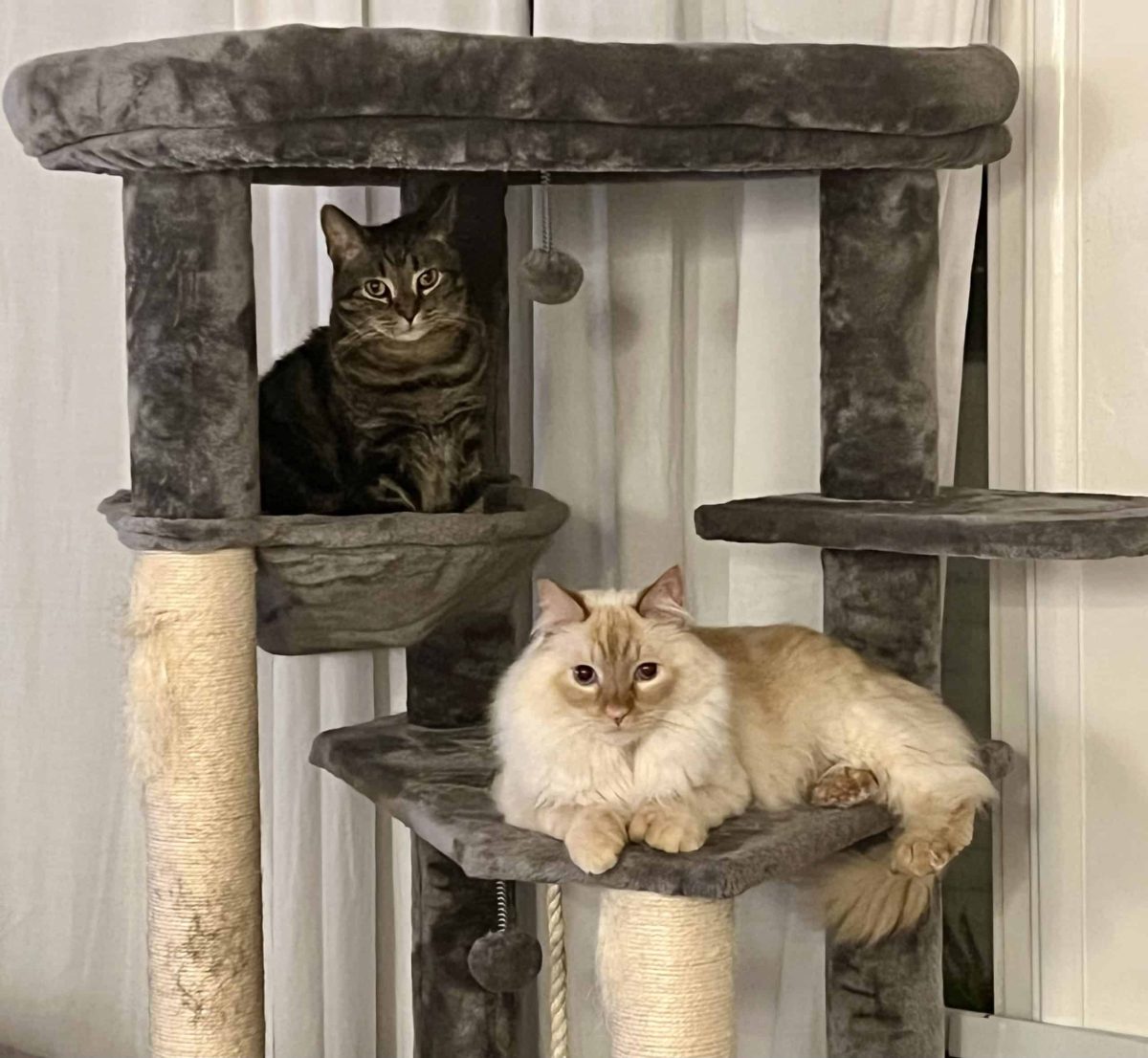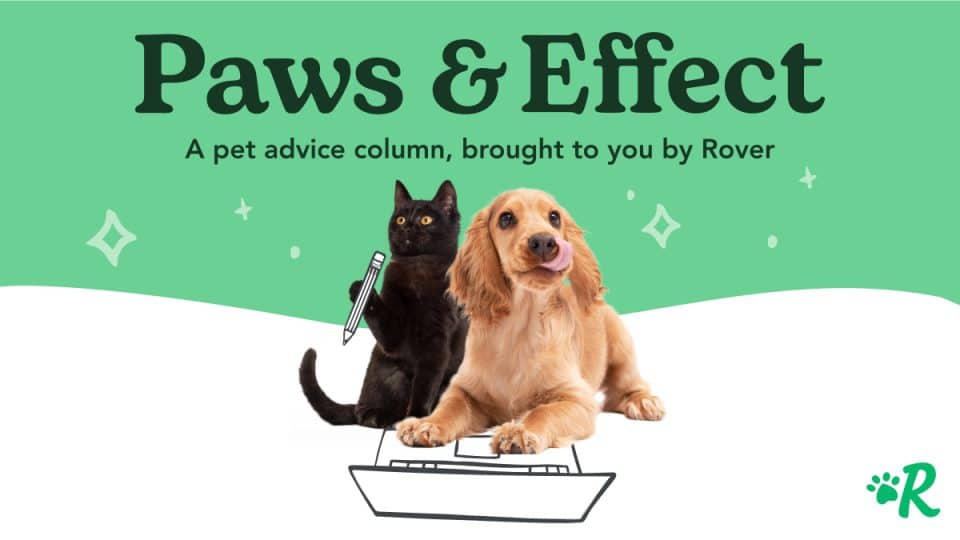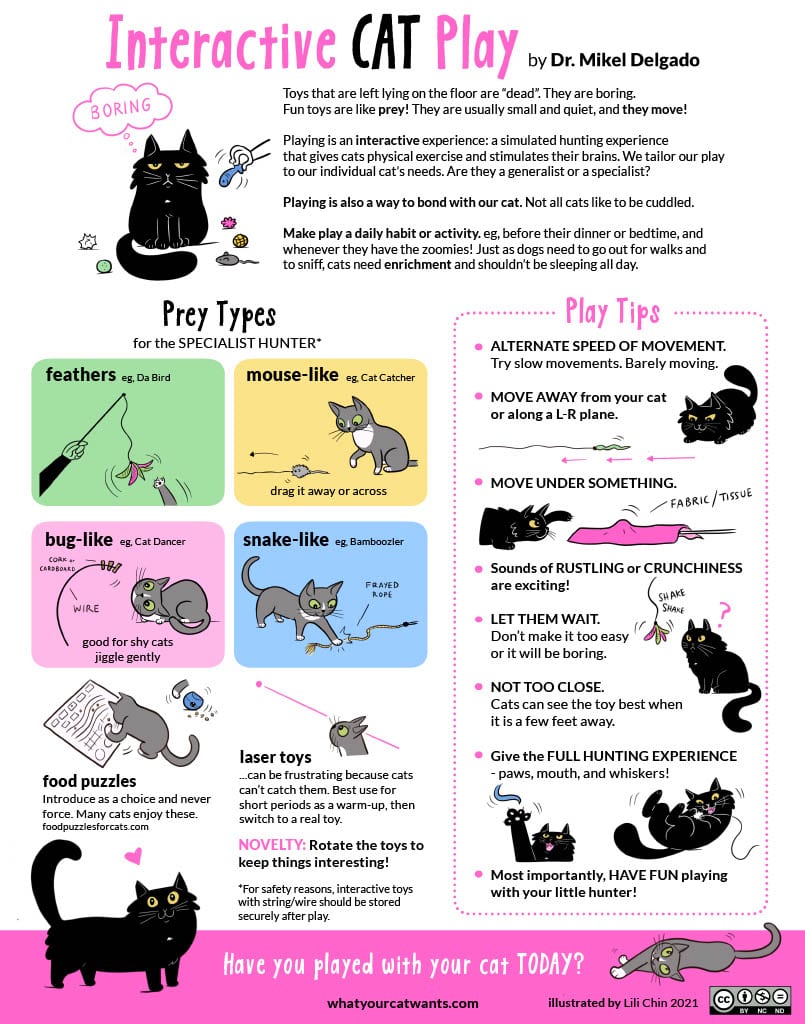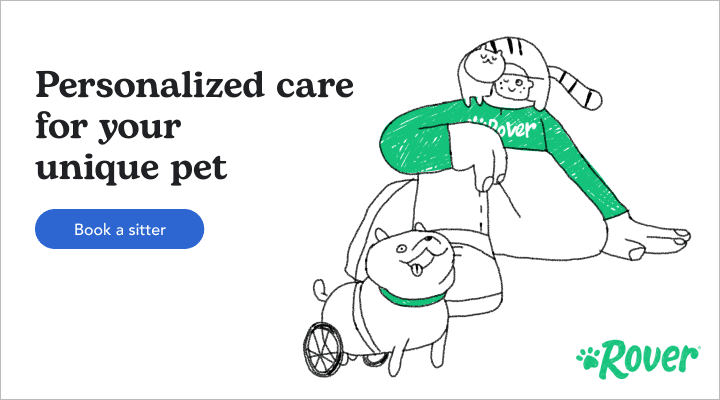Welcome to Paws and Effect, a pet expert advice column penned by longtime Rover contributor and award-winning pet writer, Jen Reeder. From navigating squishy social scenarios and murky ethical territory to burning behavioral or moral questions about cats and dogs, Jen uses her years of experience and hard-earned instincts to find real solutions for real pet people. Got a question for Jen? Email: pawsandeffect@rover.com
Hey Jen,
My sweet, sensitive dog hates it when I tell our cat “No!” when she claws the couch (yes, our cat has plenty of scratching posts and other options, but the couch is a no-go). When I correct the cat, I usually shout “Stashy, no!” and she stops clawing. The problem is the dog comes over to me for pets as if he’s apologizing and ashamed. I tell him he’s a good boy, but I still think he’s confused. Is there a better or different way I should be addressing Stashy when she claws the couch? I don’t know how to reprimand one pet without upsetting or confusing the other.
Signed, The dog knows no
Dear Dog Knows No,
Your sweet dog slays me! My senior Labrador Retriever mix, Rio, is a people-pleasing rule follower, too. Whenever our new dog Tux does something naughty, like knocking something off a tabletop, Rio suddenly appears at my side as if to say, “I didn’t do it!”
To figure out a way to help both of your pets, I shared your question with Amanda Farah, CPDT-KA, national training and behavior coordinator for the nonprofit Best Friends Animal Society—and she offered a terrific solution.
Instead of saying “no,” she suggested using a “‘positive interrupter’…some attention-getting word with either no association or a positive association to you, the dog, and the cat. You’ll say it in a tone of voice that gets the animals’ attention.”

Trainer Amanda Farah with her dog, Lala. Photo courtesy of Amanda Farah
Farah is partial to the positive interrupter “Pickle” for her dogs, Remus and Lala, and cats, Minerva and Bougie (I love Bougie’s full name: Colonel Hemingway Waffle Paws). Farah said she knows other people who use “Beep, beep!”
In any case, saying the word in a high, pleasant voice should get them to notice you. (A recent study found dogs prefer sing-songy speech), and you can start training your dog and cat to have positive associations with your chosen word.
When they hear your positive interrupter like “pickle” and turn toward you, immediately offer them a treat as a reward. Spend a couple of days doing this—when the couch isn’t involved—until you know it’s working every time.
“Once both the dog and cat are doing that reliably, when the cat goes to scratch the couch, you say ‘pickle’ and the cat turns toward you and gets a treat, and the dog does, too,” she explained. “Then once the behavior is interrupted, we decide what we want the cat to do.”
I like to think of it not as, ‘No, stop doing that,’ but, ‘Hey, do this instead.’
This is when you might want to “redirect” (aka lure) Stashy over to a nearby cat scratcher with a feather toy. As this goes on, offer games, toys, affection, or any reward other than a treat whenever you redirect—you don’t want Stashy to associate scratching the couch with getting a treat.
In the meantime, your dog won’t feel stressed hearing the reprimand “No.” In fact, Farah said that it’s best to avoid using “No” altogether, because of the negative frame of mind it can put us in, and how that may influence our perceptions of our pet’s behavior.
“I like to think of it not as, ‘No, stop doing that,’ but, ‘Hey, do this instead.’ I want something that keeps me in a positive frame of mind, so I use words that don’t have negative associations to me either,” she told me.

Amanda Farah uses the word “Pickle” as a positive interrupter with her cats, Minerva and Bougie. Photo courtesy of Amanda Farah
Farah had a few other pointers for encouraging Stashy to scratch elsewhere, including keeping her nails trim. She noted that cats claw for reasons ranging from claw maintenance and stretching to marking territory and simply because it feels good.
To keep her engaged, offer Stashy plenty of enrichment activities, like playing games with toys—and rotate the toys every few days. She mentioned a study that found cats lose interest in a toy after playing with it three times. Similarly, try rotating the location of her scratching posts. (Scroll to the bottom of the page for an infographic from Dr. Mikel Delgado and Lili Chin about how to play with your cat.)
If the couch allows a full stretch and none of the scratchers do, a higher wider scratcher near the couch might help.
Finally, consider your couch itself.
“If there is something about the couch that is significantly different than any of the offered scratchers, that could be the key to breaking the habit,” Farah noted. “Aside from location and texture, height might be important. If the couch allows a full stretch and none of the scratchers do, a higher wider scratcher near the couch might help.”
Good luck with this new adventure, Dog Knows No—and have fun choosing which word to use as a positive interrupter!
Got a question for Jen? Submit a question here.
More Paws and Effect
- Is It OK to Toss Poop Bags Into Other People’s Garbage Cans?
- Help! My Husband Thinks I Love the Cats More Than Him
- Is the Dog Park Actually Bad for Dogs?






